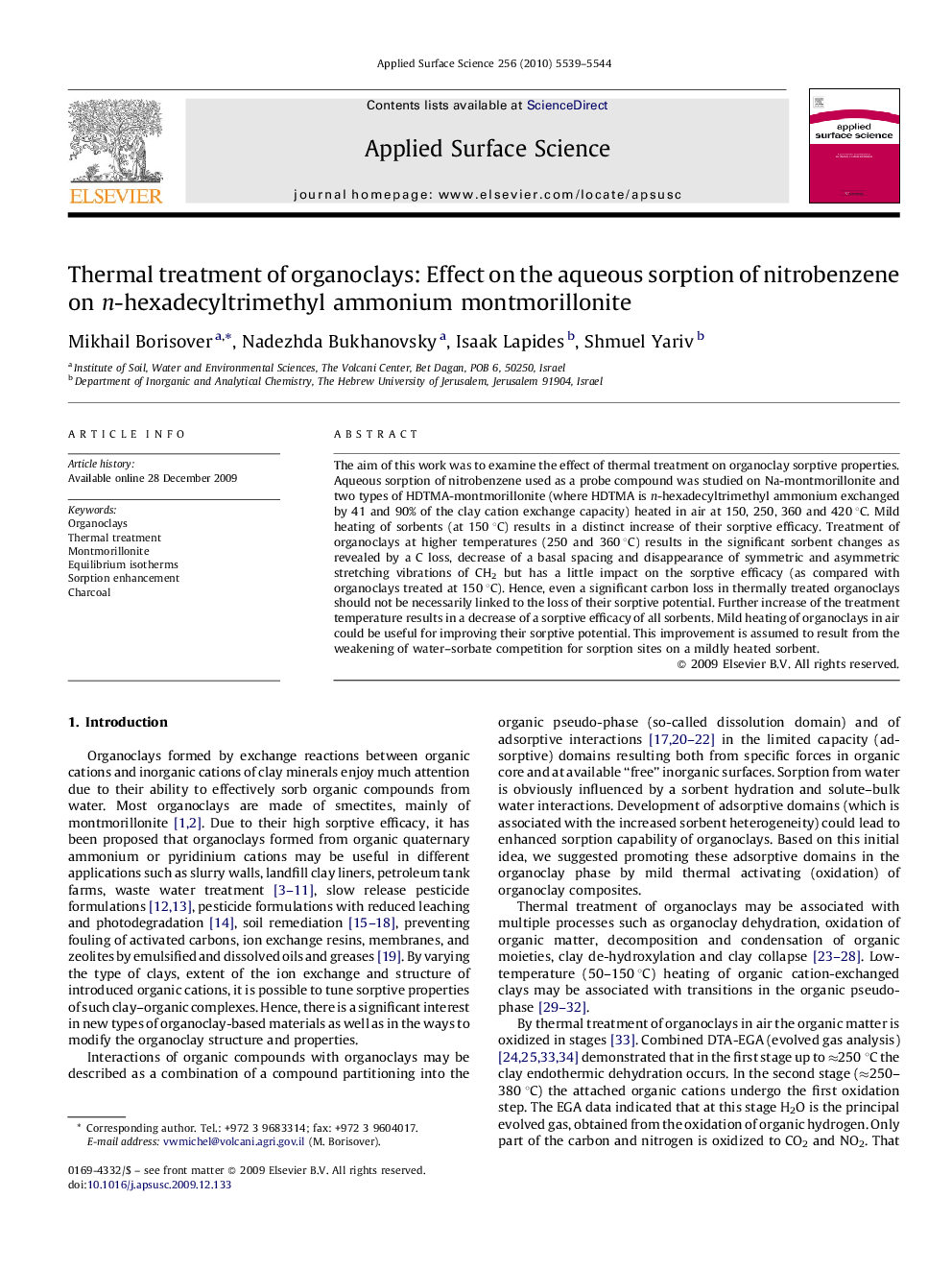| Article ID | Journal | Published Year | Pages | File Type |
|---|---|---|---|---|
| 5357905 | Applied Surface Science | 2010 | 6 Pages |
Abstract
The aim of this work was to examine the effect of thermal treatment on organoclay sorptive properties. Aqueous sorption of nitrobenzene used as a probe compound was studied on Na-montmorillonite and two types of HDTMA-montmorillonite (where HDTMA is n-hexadecyltrimethyl ammonium exchanged by 41 and 90% of the clay cation exchange capacity) heated in air at 150, 250, 360 and 420 °C. Mild heating of sorbents (at 150 °C) results in a distinct increase of their sorptive efficacy. Treatment of organoclays at higher temperatures (250 and 360 °C) results in the significant sorbent changes as revealed by a C loss, decrease of a basal spacing and disappearance of symmetric and asymmetric stretching vibrations of CH2 but has a little impact on the sorptive efficacy (as compared with organoclays treated at 150 °C). Hence, even a significant carbon loss in thermally treated organoclays should not be necessarily linked to the loss of their sorptive potential. Further increase of the treatment temperature results in a decrease of a sorptive efficacy of all sorbents. Mild heating of organoclays in air could be useful for improving their sorptive potential. This improvement is assumed to result from the weakening of water-sorbate competition for sorption sites on a mildly heated sorbent.
Keywords
Related Topics
Physical Sciences and Engineering
Chemistry
Physical and Theoretical Chemistry
Authors
Mikhail Borisover, Nadezhda Bukhanovsky, Isaak Lapides, Shmuel Yariv,
